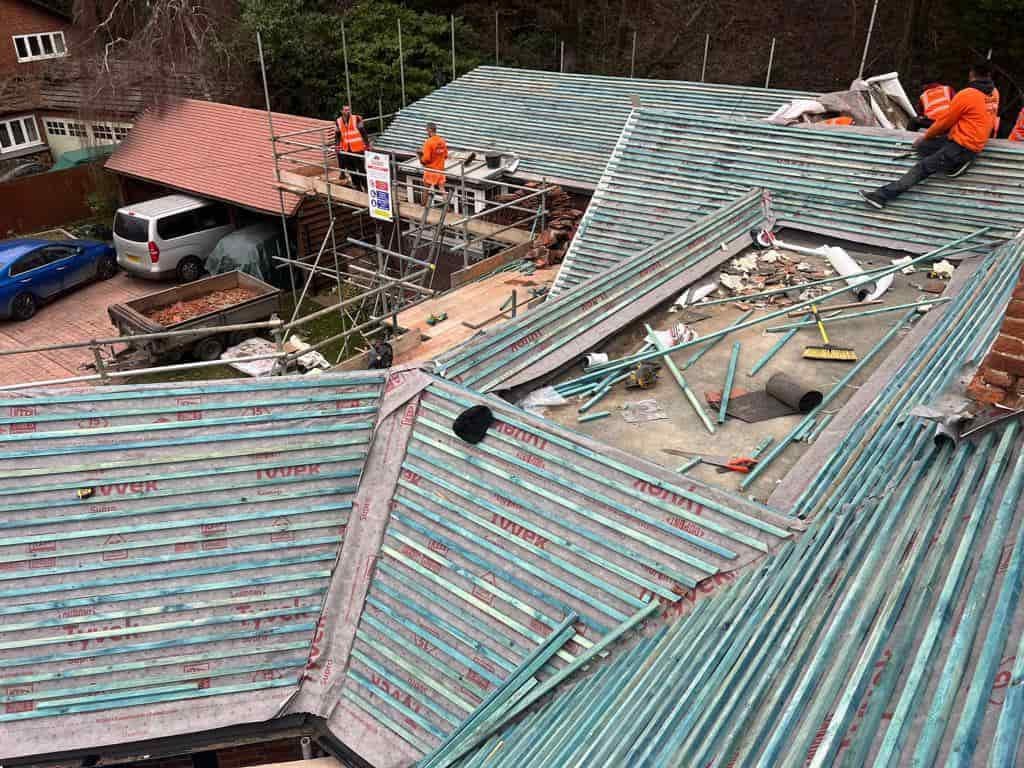Flat Roof Drainage Systems: Why They Matter
Introduction: Flat roofs are a popular choice for modern homes and commercial buildings due to their sleek design and efficient use of space. However, ensuring proper drainage is one of the most critical aspects of maintaining a flat roof. At LNM Roofing Featherstone, we understand the importance of a well-designed drainage system for flat roofs. This blog post will explore why flat roof drainage systems matter and how they can protect your property from potential damage.
The Importance of Flat Roof Drainage Systems
1. Preventing Water Accumulation
Flat roofs, by design, have a minimal slope, making it challenging for water to drain naturally. Without an effective drainage system, water can accumulate on the roof’s surface, leading to several issues:
- Structural Damage: Standing water adds extra weight to the roof, compromising its structural integrity over time.
- Leakage: Prolonged water exposure can cause leaks, allowing water to seep into the building and damage the interior.
- Mould and Mildew: Water accumulation creates a damp environment conducive to mould and mildew growth, which can pose health risks and damage building materials.
2. Extending Roof Lifespan
Proper drainage is essential for extending the lifespan of your flat roof. Water is one of the most significant threats to any roofing material. Ensuring efficient drainage can prevent water-related damage and prolong the roof’s overall durability. This means fewer repairs and replacements, saving you money in the long run.
3. Maintaining Energy Efficiency
A well-drained flat roof can also contribute to your building’s energy efficiency. Water pooling on the roof can increase thermal conductivity, leading to higher energy consumption for heating and cooling. Effective drainage helps maintain the roof’s insulating properties, keeping your energy bills in check.
4. Enhancing Aesthetic Appeal
Stagnant water on a flat roof can lead to unsightly stains and debris buildup, detracting from the building’s overall appearance. A well-maintained drainage system ensures that water is promptly removed, preserving the roof’s aesthetic appeal and preventing damage to the exterior.
Types of Flat Roof Drainage Systems
Several types of drainage systems are available for flat roofs, each with advantages. Here are some of the most common options:
1. Internal Drains
Internal drains are installed within the roof structure and connected to the plumbing system. They are designed to collect water and channel it away from the roof through a series of pipes.
Advantages:
- Efficient Water Removal: Internal drains are highly effective at removing water from the roof surface.
- Minimal Visibility: The drainage system is built into the roof, so it is less visible and does not affect the roof’s appearance.
2. Scuppers
Scuppers are openings along the roof’s edges that allow water to drain off the sides. They are often combined with downspouts to direct water away from the building.
Advantages:
- Cost-Effective: Scuppers are relatively inexpensive and easy to install.
- Effective for Heavy Rainfall: Scuppers can handle large volumes of water, making them suitable for areas with heavy rainfall.
3. Gutters and Downspouts
Gutters and downspouts are traditional drainage systems. Water is collected in gutters along the roof’s edge and directed down through downspouts.
Advantages:
- Simple Installation: Gutters and downspouts are straightforward to install and maintain.
- Versatile: Suitable for a variety of roof types and building designs.
Maintaining Your Flat Roof Drainage System
Regular maintenance is crucial to ensure your flat roof drainage system functions properly. Here are some tips to keep your system in top condition:
- Regular Inspections: Conduct routine inspections to check for any blockages, leaks, or damage to the drainage system.
- Clear Debris: Remove leaves, dirt, and other debris from the drains, scuppers, and gutters to prevent clogs.
- Check for Damage: Inspect the roof surface and drainage components for signs of wear and tear, and address any issues promptly.
- Professional Maintenance: Schedule professional maintenance and cleaning services to ensure your drainage system is in optimal condition.
Conclusion: Flat roof drainage systems are essential for protecting your property from water damage and ensuring the longevity of your roof. By understanding the importance of flat roof drainage and investing in a well-maintained system, you can enjoy a durable, energy-efficient, and visually appealing roof for years to come.
Call us on: 01977 802 587
Click here to find out more about LNM Roofing Featherstone
Click here to complete our contact form and see how we can help you with your roofing needs.

